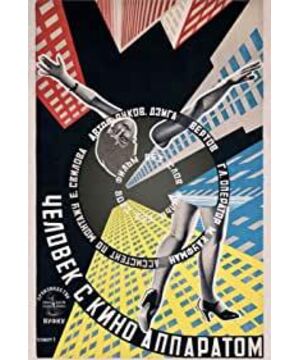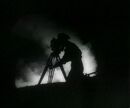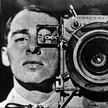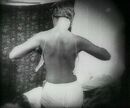In 1923, the Soviet Union initiated the film theory, creation method and aesthetic system, and it was also the avant-garde genre of Soviet documentary film. The October Revolution and Vertov's editorial work experience in "Film Weekly" prepared the mature ideological conditions for the Film Eye School. In June 1923, Vertov published a manifesto article "Cine Eye - Man - Revolution" in the third issue of "Lev", proposing that "Cine Eye" is "eye plus filmmaker", "I observe" plus "" The creative concept of "I think", advocates that the film camera is the "eye" that "captures life unexpectedly", opposes narrative films, opposes artificial rehearsal, excludes actors, costumes, sets, lighting and artistic processing in the studio, and believes that it can be achieved through The montage technique reorganizes the real shots of natural forms, so as to express the "substance of the objective world" at the height of ideology, and advocates that the film must become "a master of observation - an organizer of life seen by the eyes", emphasizing the choice of important It is necessary to observe the moment, and advocate the organization of materials according to the principle of association and the corresponding rhythm, strengthen emotional appeal through montage techniques, guide the audience to reach a clear ideological conclusion, and explain the political meaning of events through montage of images and words (political slogan subtitles).
Under the banner of "Cinema Eye Theory", Vertov formed the "Cinema Eye School" production group, and shot the news briefing-style "Cinema Pravda" (1922-1924) and "The Man with a Movie Camera" (1929), Successful films such as "On One-Sixth of the World" (1926) and "Three Songs About Lenin" (1934) sought to celebrate the nascent Soviet society through real material from life.
Due to technical limitations, the film-eye group failed to fully implement their theoretical propositions, as George Sadur said: "They encountered some insurmountable obstacles during the shooting process, especially because the cameras at that time were bulky and difficult to manipulate. "However, the theory and practice of the film eye school influenced later realist creations and aesthetic schools, such as Jean Viggo, Evans, Grierson, British free film, and neorealism. In the 1960s, Jean Rouch's French "Real Film" took the "Cinema Eye School" as an example and created films that reflected social reality. The word "Real Film" is the French literal translation of the word "Film Pravda".
The appearance of the sound film enabled Vertov to combine the "movie eyes" and "radio ears" he advocated since 1922 to form a montage of sound and picture counterpoints. Although he refuses to be an individual hero, he transforms the masses into individual heroes on a variety of subjects. But after Lullaby (filmed in 1937), his theories were so attacked that he made only a few mission films before his death.
View more about Man with a Movie Camera reviews







